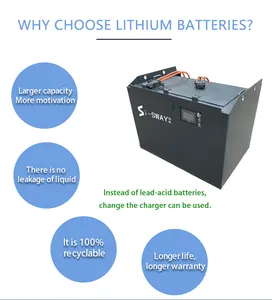
Forklift Traction Battery BMS Lifepo4 Battery 48V 80V 180AH 230AH 300AH 460AH 600AHLithium Ion Batteries For Forklift Trucks


China High Quality 2V Forklift Battery Pack 12V 24V 36V 48V Traction Lead Acid Battery For Electric Forklifts

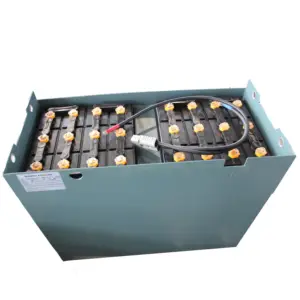





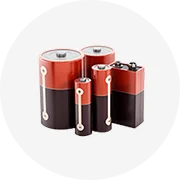

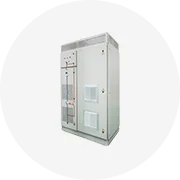
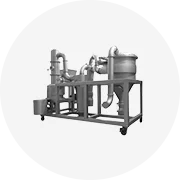

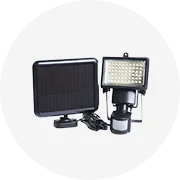
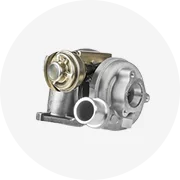
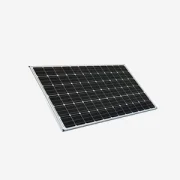

A traction battery is a rechargeable battery specifically designed for powering electric vehicles (EVs), such as forklifts, golf carts, and electric bicycles. These batteries deliver the substantial current necessary for propulsion systems. The traction battery pack is a vital element of the electric powertrain, striking a balance between performance, dependability, and durability.
There is a range of traction batteries on the market, each with unique attributes tailored to different uses. The venerable lead acid traction batteries are prized for their sturdiness and have been the reliable workhorse for industrial vehicles for many years. They are cost-effective and readily recyclable, appealing to cost-sensitive operations. The lithium ion traction battery is a contemporary alternative, boasting a greater energy density for a lighter, longer-lasting, and more efficient battery in high-demand scenarios. The semi traction battery is typically employed in situations where regular, but not full, discharge and recharge cycles occur, such as in leisure vehicles. For more demanding tasks, the pzs tubular plate traction technology provides superior endurance and deep-cycle capacity, crucial for machinery like forklifts that need sustained power. The hybrid traction battery merges technologies to deliver both high energy and power density, ideal for vehicles requiring rapid acceleration and efficient regenerative braking.
The architecture of a traction battery is crafted to withstand the dynamic and occasionally harsh conditions of mobile applications. Its construction includes a robust casing that shields the internal cells from mechanical impacts and environmental elements. Cells are organized into modules within the casing, and these modules are linked in series or parallel to create the entire battery pack. This modular approach not only simplifies repairs and allows for scalability but also bolsters the battery's overall safety and efficacy. The integration of a Battery Management System (BMS) is essential, as it perpetually monitors the condition of each cell and module, ensuring balanced charging and discharging, thereby extending the battery's lifespan and preserving its efficiency.
The constituents of traction batteries are chosen for their electrical characteristics and resilience. Lead-acid batteries feature lead plates immersed in a sulfuric acid electrolyte solution, encased within a durable plastic shell that resists acid corrosion and physical harm. In contrast, lithium ion traction batteries employ sophisticated materials like lithium iron phosphate or lithium nickel manganese cobalt oxide for electrodes, providing a mix of safety, energy density, and longevity. The casings for these batteries are also more advanced, often made of lightweight metals or composites that endure higher operating temperatures and offer superior cell protection.
Traction batteries are essential in a wide array of commercial applications. In the logistics and warehousing sector, forklift traction batteries facilitate the continuous movement and lifting of goods, directly influencing operational efficiency and productivity. In urban transit, ev traction batteries propel buses and taxis, aiding in the reduction of city pollution and noise. For renewable energy installations, these batteries store surplus power from solar arrays or wind turbines, guaranteeing a steady energy supply and fostering a more robust grid. In personal transport, electric scooters and bikes powered by semi traction leisure batteries provide a greener alternative to traditional vehicles, promoting sustainable city living.
The fundamental role of a traction battery is to supply a dependable power source for electric motors. These batteries are tailored to provide the requisite current for vehicle propulsion, whether for smooth acceleration in passenger EVs or the continuous power needed for industrial vehicles. The ev traction battery excels at managing the high power demands during vehicle acceleration and can recapture energy through regenerative braking, storing it for future use. This dual function is crucial for the stop-start nature of city driving and significantly enhances the efficiency of electric vehicles.
Traction batteries stand out for their cutting-edge features and ongoing innovations. Contemporary lithium ion traction batteries often incorporate sophisticated BMS that safeguard against overcharging and deep discharging while optimizing the battery's state of charge across diverse temperatures and usage patterns. This technology ensures optimal operation of each cell, improving performance and extending battery life. Some traction battery packs are also designed to be swappable, a considerable benefit for businesses operating continuously with minimal time for recharging.
Embracing traction batteries offers numerous advantages. They significantly diminish the carbon footprint of transport and industrial activities, in line with international sustainability objectives. The operational costs linked to lithium traction batteries are lower over time due to their longer service life and minimal maintenance needs compared to conventional lead-acid batteries. Moreover, the dependability of these batteries can lead to heightened productivity and fewer operational interruptions, a vital consideration for businesses dependent on constant vehicle availability.
Optimal use and maintenance are crucial for maximizing the lifespan and functionality of a traction battery. This involves adhering to the manufacturer's recommendations for charging and discharging cycles, as well as keeping the battery within the proper temperature range to avoid overheating or freezing. Routine maintenance, especially for lead-acid types, such as checking electrolyte levels and cleaning terminals to prevent corrosion, is vital. For lithium-ion batteries, it is important to keep the BMS firmware updated to ensure peak performance. Installation should always be conducted by certified professionals to guarantee correct integration into the vehicle's power system and adherence to all safety standards.
Traction batteries are fundamental to electric power systems, supplying the energy required to operate electric motors. They function in harmony with other key components such as PLCs, motors, and engines to ensure efficient power delivery from the battery to the wheels.
Safety is of utmost importance for traction batteries. They come equipped with various protective measures such as venting systems, flame retardants, and sturdy casings to prevent leaks and guard against physical damage. Advanced traction battery packs also feature BMS that monitor cell conditions and avert overcharging.
To guarantee optimal performance, a traction battery should operate within its designated temperature range and state of charge guidelines. Regular diagnostics and BMS firmware updates can also aid in maintaining the battery's efficiency and prolonging its usable life.